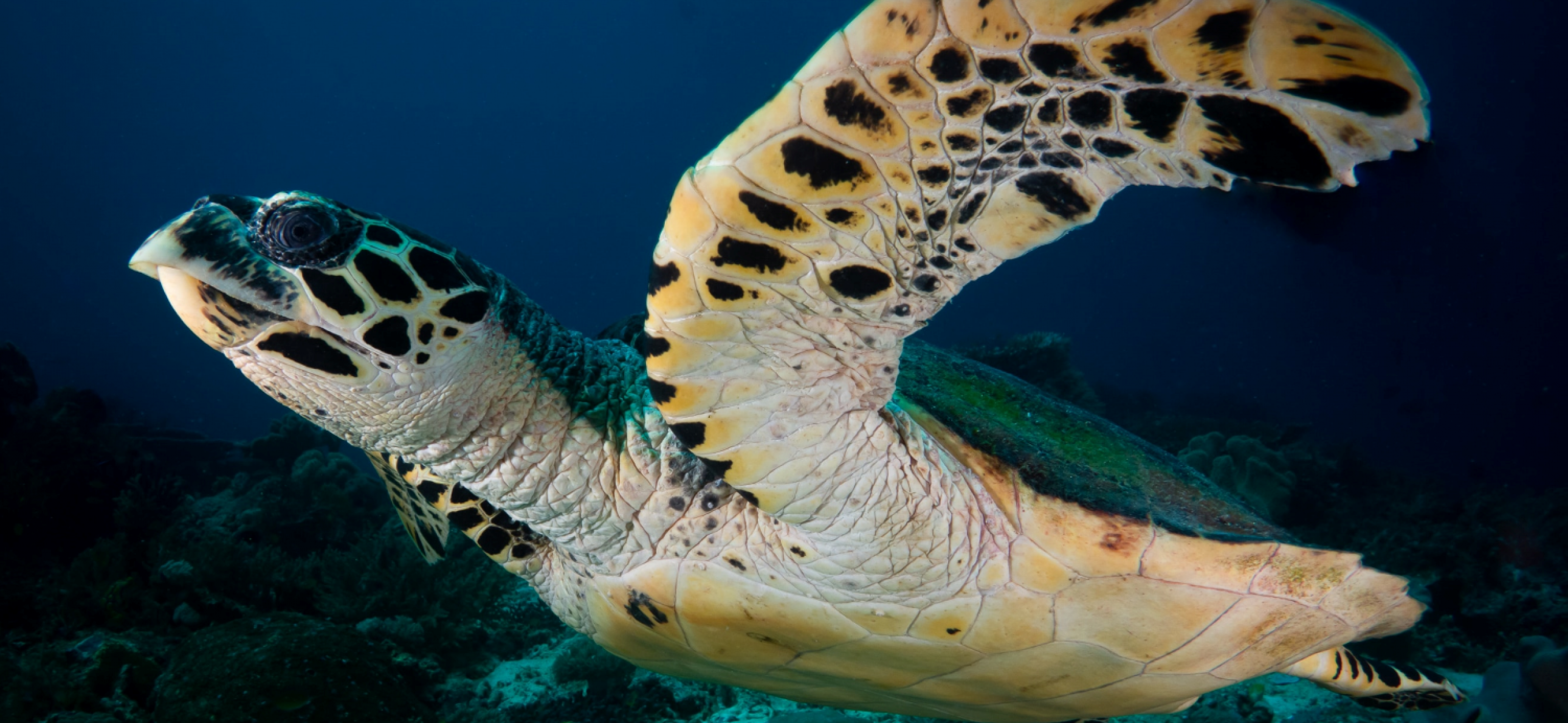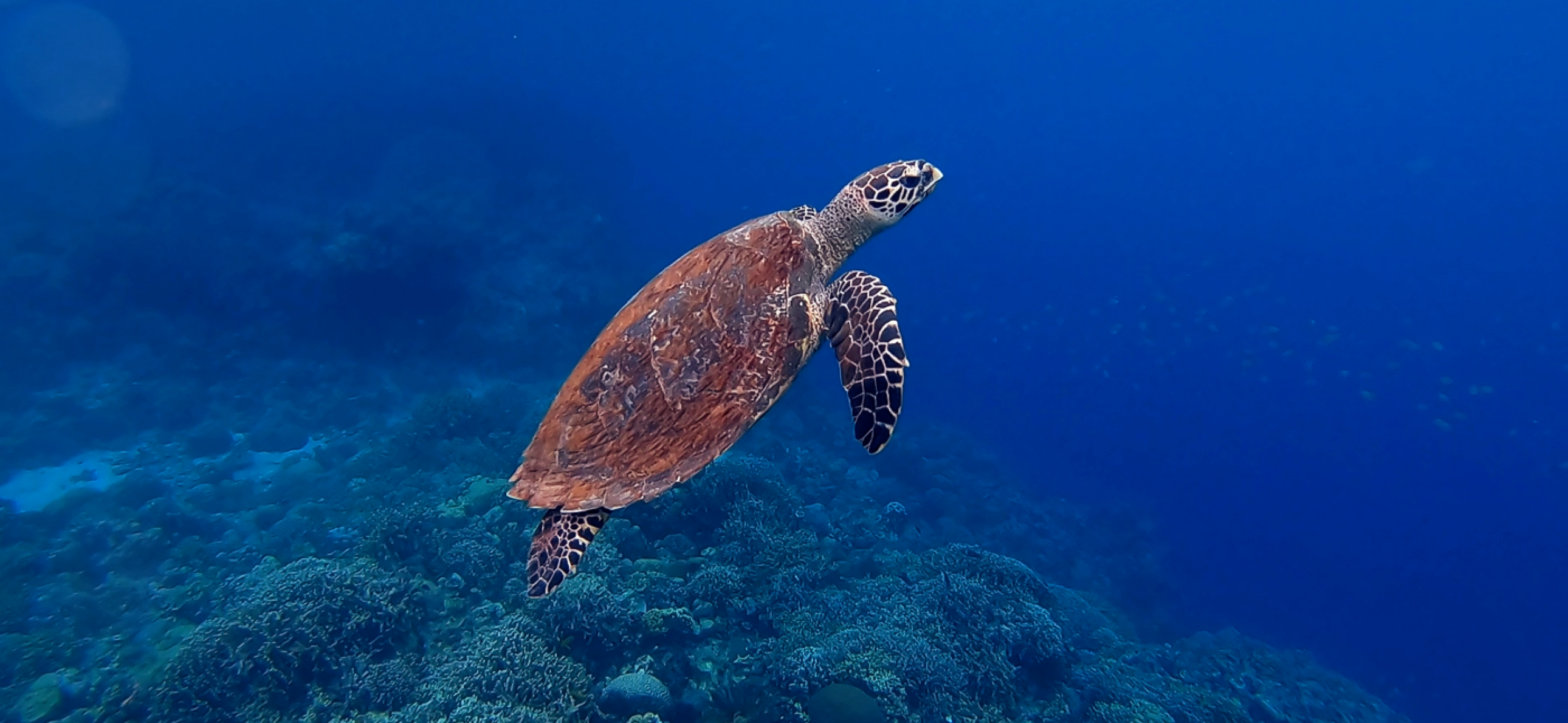Scientific name: Eretmochelys imbricata
IUCN Red List Status: Critically Endangered
About Hawksbill Sea Turtles
Did you know that hawksbill sea turtles are considered some of the most beautiful and charismatic creatures of the ocean? With their stunning shells and playful personalities, they are true ocean celebrities!
Hawksbill sea turtles are recognized by their pointed beaks and intricately designed shells and can be located in tropical and subtropical waters worldwide, with a higher prevalence in the Atlantic, Indian, and Pacific Oceans. While they inhabit a range of environments such as seagrass beds, rocky habitats, and open ocean habitats, they are commonly found in shallow waters adjacent to coral reefs.
Hawksbill turtles are a unique and fascinating species that are known for their distinctive physical features and important ecological role. Their pointed beaks and beautifully patterned shells make them easily recognizable and highly sought after, but unfortunately, this has also led to their drastic decline in population due to hunting and habitat loss. Hawksbills play a crucial role in maintaining the health of coral reefs by feeding on sponges, which can prevent overgrowth and damage to the coral. They are also skilled navigators that can travel long distances between their feeding and nesting areas.
Additionally, Hawksbill turtles have unique physical characteristics, reproductive behaviors, and ecological roles that make them fascinating and important animals. They are generally smaller than other sea turtle species, with adults averaging 2-3 feet in length and 100-150 pounds in weight, although some individuals can grow up to 4 feet in length and over 200 pounds in weight. Female Hawksbill turtles reach sexual maturity at around 20-30 years of age, and nesting season varies depending on the region, with peak nesting occurring between March and June in the UAE. Females lay 2-5 clutches of eggs per season, with each clutch containing an average of 100 eggs.
Unfortunately, Hawksbill turtle populations have declined dramatically due to habitat loss, hunting, and bycatch, and conservation efforts are crucial to their survival. Protecting nesting beaches, regulating the trade of Hawksbill products, and reducing accidental capture in fishing gear are all important actions that can help ensure the continued existence of this critically endangered species.
Fun facts:
- Hawksbill turtles have excellent underwater eyesight and can see in color! This helps them find their favorite food, which is sponges.
- They are named after their distinctive beak-like mouth which resembles that of a Hawk.
- They are one of the few marine turtles that are known to nest during the day.
- Hawksbill sea turtles are one of the smallest species of sea turtles, measuring only 2 to 3 feet!
- The gender of the hatchlings is determined by the temperature of the sand! Higher temperature will increase the likely hood of female hatchlings, and lower temperatures will increase the likely hood of male hatchlings, therefore global warming will have a significant effect on their survival.


